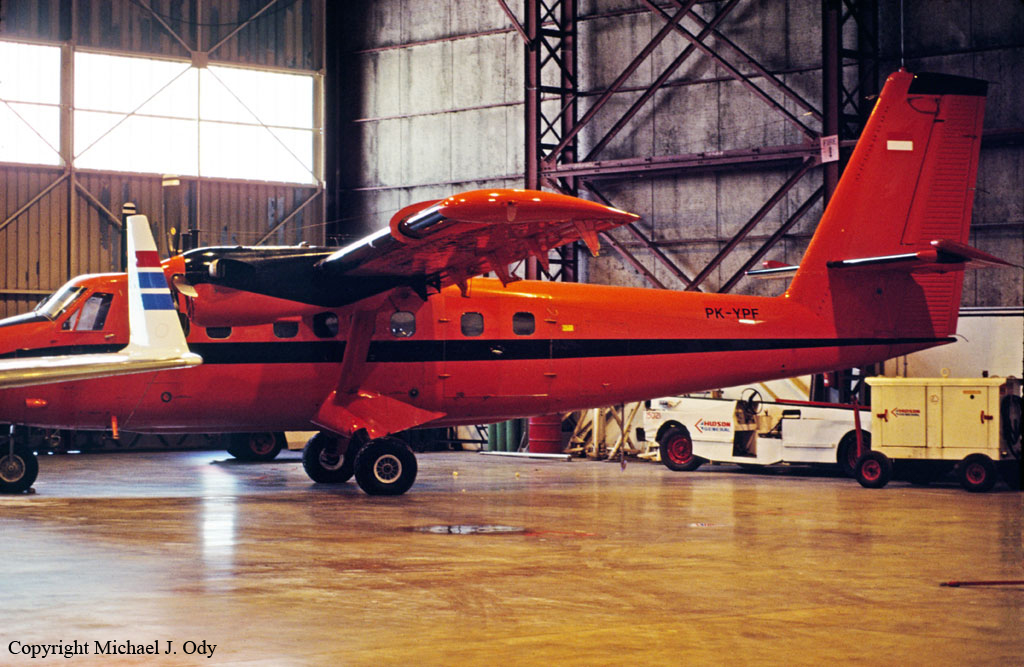Country
Crash of a De Havilland DHC-6 Twin Otter 310 in Limbang
Date & Time:
Jan 8, 1998 at 1744 LT
Registration:
9M-MDJ
Survivors:
Yes
Schedule:
Miri - Limbang
MSN:
791
YOM:
1982
Crew on board:
2
Crew fatalities:
Pax on board:
6
Pax fatalities:
Other fatalities:
Total fatalities:
0
Circumstances:
The aircraft landed a little too far down the runway and bounced twice. Out of control, it skidded and overran the runway before coming to rest in a ditch. All eight occupants escaped uninjured while the aircraft was damaged beyond repair.

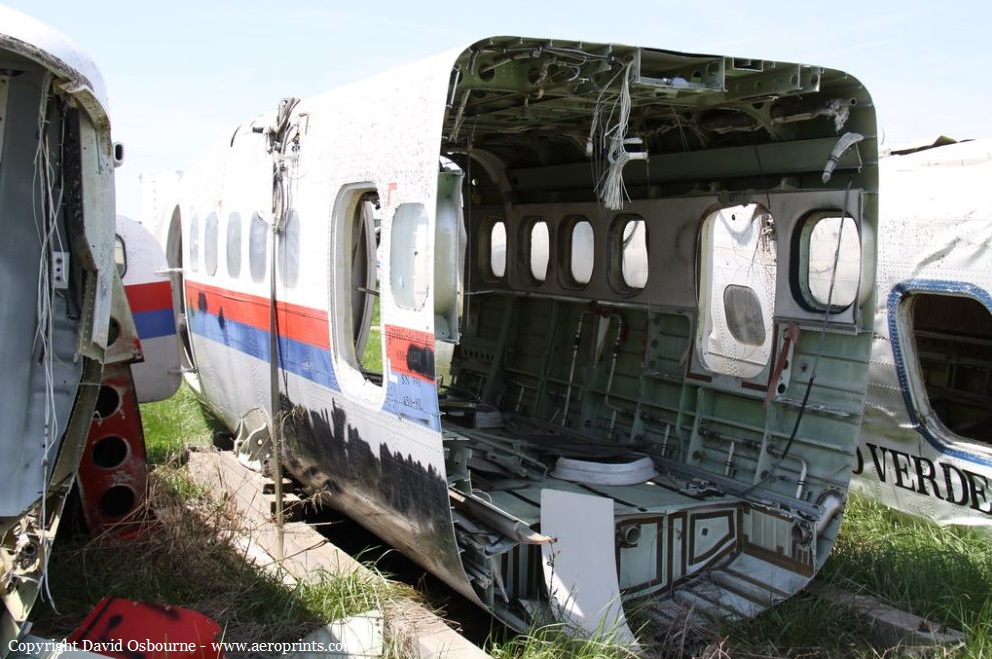
Crash of a De Havilland DHC-6 Twin Otter 300 near Simbai
Date & Time:
Nov 9, 1997 at 1000 LT
Registration:
VH-HPY
Survivors:
Yes
Schedule:
Koinambe - Simbai
MSN:
706
YOM:
1980
Crew on board:
4
Crew fatalities:
Pax on board:
0
Pax fatalities:
Other fatalities:
Total fatalities:
0
Captain / Total hours on type:
576.00
Copilot / Total hours on type:
900
Aircraft flight hours:
18096
Circumstances:
The flight was one of a series being conducted by No. 173 Surveillance Squadron, 1st Aviation Regiment operating a de Havilland Canada DHC-6 (Twin Otter) aircraft as Exercise Highland Pursuit 2/97. The purpose of the exercise was to provide training for three No. 173 Squadron pilots in tropical mountainous operations in Papua New Guinea (PNG). All trainees were qualified on the aircraft type. The training pilot was the pilot in command. He had extensive experience in flying Twin Otter and other aircraft types in PNG as a civilian pilot and had also flown de Havilland Canada DHC-4 (Caribou) aircraft in PNG as a military pilot. Passengers were not carried on the flight. The plan for 9 November 1997 was to fly from Madang and return via a number of airstrips where landing and take-off exercises would be conducted. A flight plan was submitted to Madang Flight Service. At 0915 PNG time, the aircraft arrived at Koinambe where each trainee conducted landing and take-off practice. During this time, the training pilot occupied the right cockpit seat while the trainees, in turn, flew the aircraft from the left cockpit seat. The crew had flight-planned to track direct from Koinambe to Simbai. However, before departing Koinambe, they assessed that this would not be possible because of haze and cloud on track. The training pilot, who was still occupying the right control position, suggested that they could follow the Jimi River north-west from Koinambe and then one of its tributaries towards Simbai. This involved a right turn off the Jimi River about 37 km from Koinambe to follow the valley that passed about 2 km south of Dusin airstrip and then tracked south-east towards Simbai. The navigating pilot, in the left cockpit seat, suggested that, instead of following the tributary off the Jimi River as suggested by the training pilot, they should follow the valley which extended north-east off the Jimi River from a position about 17 km north-west of Koinambe. This was a shorter route than that suggested by the training pilot. The training pilot agreed that the route could be attempted. Neither during this discussion, nor at any earlier time, was there any reference to the elevation of the Bismarck Range. (The increase in ground elevation from the Jimi River to the Bismarck Range, a straight-line distance of about 17 km, is approximately 7,400 ft.) The crew was using an Operational Navigation Chart (ONC) 1:1,000,000-scale chart for in-flight navigation. After departing Koinambe, the crew began following the Jimi River, flying at about 1,000 ft above ground level (AGL). The training pilot had intended to remain in the right cockpit seat for the short flight to Simbai. However, to gain the maximum benefit from flying time during the exercise, he had adopted the practice of having trainees occupy both cockpit seats during the en-route sectors of the exercise. He would then monitor the progress of the flight from either between the cockpit seats or the aircraft cabin. In this instance, he vacated the right seat for a trainee who then became the flying pilot for the sector. The navigating pilot then made the required radio calls, one on VHF radio and the other (which was unsuccessful at the first attempt) on HF radio to Madang Flight Service to report the departure of the aircraft from Koinambe. A short time later, the navigating pilot became unsure of the aircraft's position. The flying pilot then conducted several left orbits while the navigating pilot obtained a Global Positioning System (GPS) fix and plotted the position on the ONC chart. He indicated on the chart, and received agreement from the training pilot, that he had identified the aircraft's position. The flying pilot then resumed tracking along the river. During this time the training pilot was in the cabin of the aircraft. He was wearing a headset which was equipped with an extension lead to enable him to communicate with the cockpit crew. He was frequently checking the aircraft's position through the cabin side windows. A short time later, the navigating pilot indicated what he believed to be the valley where the aircraft was to turn towards Simbai. The flying pilot turned the aircraft into this valley. He estimated that the aircraft was flying about 500 ft above the treetops at this time. The crew did not conduct a heading check to confirm that they were in the correct valley. When the aircraft was well into the valley, the training pilot heard over the intercom the flying and navigating pilots discussing the progress of the flight. He sensed some unease in their voices and moved forward from the aircraft cabin to a position between the cockpit seats. He immediately realised that the aircraft was at an excessive nose-high pitch angle and in a position from where it could not outclimb the terrain ahead or turn and fly out of the valley. The flying and navigating pilots ensured that the engine and propeller controls were set to full power and maximum RPM and selected 10 degrees flap. However, the training pilot assessed that impact with the trees was imminent. He ensured that the trainee seated in the cabin was strapped into his seat and then positioned himself on the floor aft of, and against, the cabin bulkhead. The stall warning activated at that time and, almost immediately, the aircraft crashed through the trees to the ground. When the crew had not reported to flight service by 1004, communication checks were initiated. An uncertainty phase was declared at 1023 when there was no contact with the crew. At 1045, this was upgraded to a distress phase after the pilot of a helicopter operating in the area reported that the aircraft was not on the ground at Simbai airstrip. The pilot of the helicopter was tasked with tracking from Simbai to Koinambe in an attempt to locate the aircraft. At 1127, the helicopter pilot reported receiving a strong emergency locator transmitter signal and, shortly after, located the accident site in a valley about 9 km south of Simbai.
Probable cause:
The following factors were identified:
1. There had been a significant loss of corporate knowledge, experience and risk appreciation within the Army concerning the operation of Twin Otter type aircraft in tropical mountainous areas.
2. No training needs analysis for the exercise had been conducted.
3. The tasking and briefing of the training pilot were incomplete.
4 The training pilot did not adequately assess the skill development needs of the trainees.
5. The supervision of the flight by the training pilot was inadequate.
6. The scale of chart used by the crew was not appropriate for the route they intended to fly.
1. There had been a significant loss of corporate knowledge, experience and risk appreciation within the Army concerning the operation of Twin Otter type aircraft in tropical mountainous areas.
2. No training needs analysis for the exercise had been conducted.
3. The tasking and briefing of the training pilot were incomplete.
4 The training pilot did not adequately assess the skill development needs of the trainees.
5. The supervision of the flight by the training pilot was inadequate.
6. The scale of chart used by the crew was not appropriate for the route they intended to fly.
Final Report:
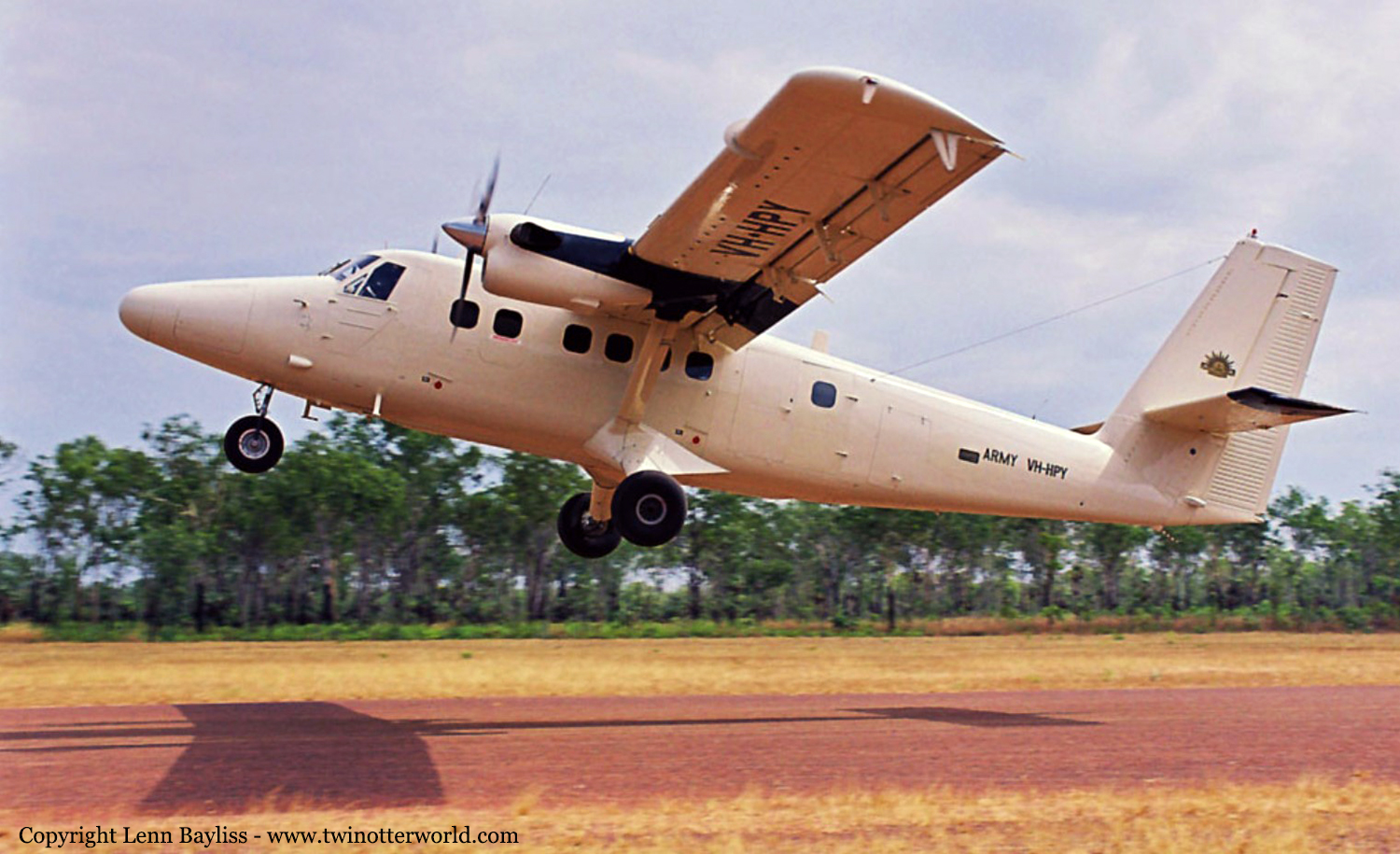

Crash of a De Havilland DHC-6 Twin Otter 300 on Mt Minembwe: 22 killed
Date & Time:
Sep 12, 1997
Registration:
9Q-CRY
Survivors:
No
Schedule:
Bukavu - Uvira
MSN:
612
YOM:
1979
Crew on board:
2
Crew fatalities:
Pax on board:
20
Pax fatalities:
Other fatalities:
Total fatalities:
22
Circumstances:
The aircraft was completing a charter flight from Bukavu to Uvira, carrying people who were on their way to a peace meeting between factions in the eastern part of the country. While cruising in limited visibility, the aircraft struck the slope of a mountain located in the Minembwe Mountain Range, about 70 km southwest of Uvira. All 22 occupants were killed.
Probable cause:
Controlled flight into terrain.
Crash of a De Havilland DHC-6 Twin Otter 300 in Goroka: 2 killed
Date & Time:
Jul 18, 1997 at 1032 LT
Registration:
P2-MMU
Survivors:
Yes
Schedule:
Port Moresby - Mount Hagen - Chimbu - Goroka
MSN:
250
YOM:
1969
Crew on board:
2
Crew fatalities:
Pax on board:
2
Pax fatalities:
Other fatalities:
Total fatalities:
2
Circumstances:
En route from Chimbu to Goroka, the crew encountered poor weather conditions with rain falls and fog. Other crew diverted to Madang Airport but the crew decided to continue. While flying at an altitude of 7,400 feet in limited visibility, the aircraft struck the slope of Mt Yasirua located 7,2 km northeast of Goroka Airport. A pilot and a passenger survived while both other occupants were killed.
Probable cause:
Controlled flight into terrain.
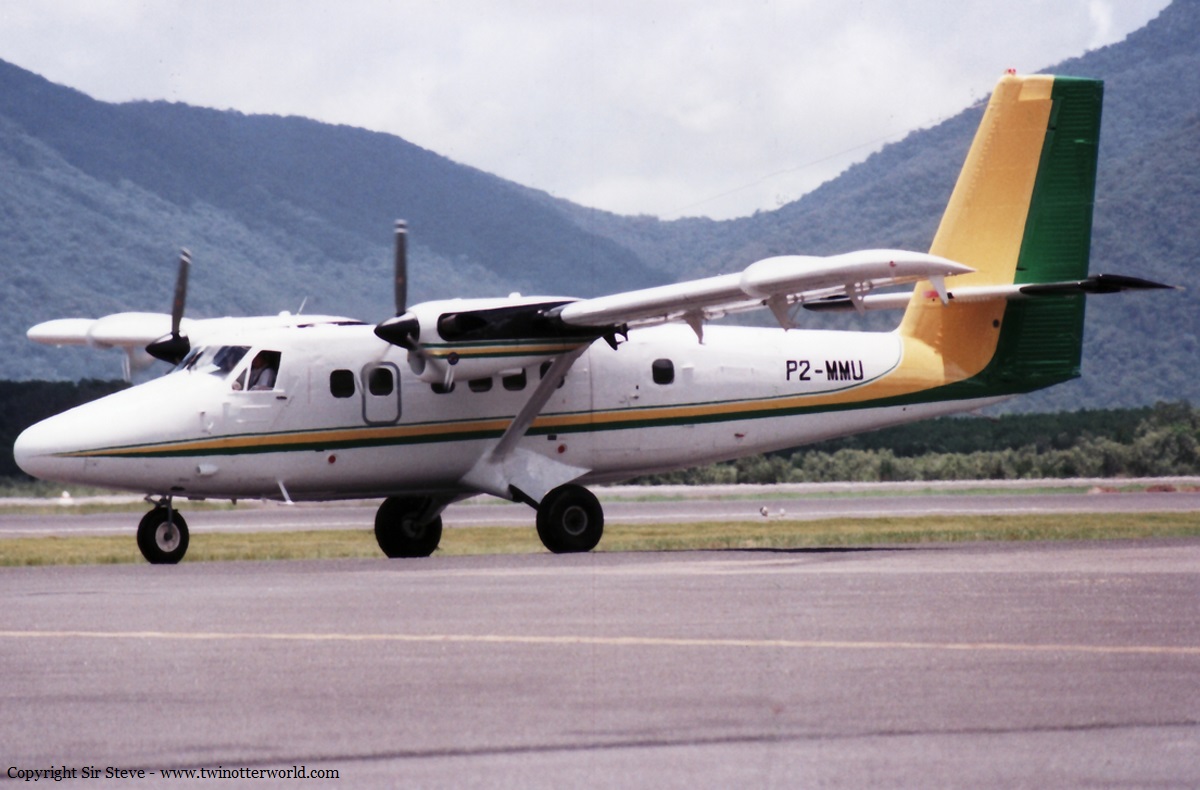
Crash of a De Havilland DHC-6 Twin Otter 300 in the Pacific Ocean
Date & Time:
Apr 12, 1997 at 2204 LT
Registration:
N242CA
Survivors:
Yes
Schedule:
Oakland - Honolulu
MSN:
342
YOM:
1972
Crew on board:
1
Crew fatalities:
Pax on board:
0
Pax fatalities:
Other fatalities:
Total fatalities:
0
Captain / Total hours on type:
1000.00
Aircraft flight hours:
9873
Circumstances:
On a ferry flight from Oakland, California, to Honolulu, Hawaii, the pilot declared a low fuel emergency and diverted toward Hilo, Hawaii. Approximately 2.5 hours later, the aircraft was ditched in the Pacific ocean. The pilot evacuated the aircraft before it sank and was rescued by the U.S. Coast Guard. He stated that, under flight planned conditions, the aircraft departed Oakland with sufficient fuel onboard to reach the intended destination with a 2-hour fuel reserve. However, the winds at flight altitude, which were reported as light and variable at the preflight weather briefing, developed into a significant headwind during the flight. At a point 7 hours and 10 minutes into the flight, the pilot determined that his fuel remaining was 8 hours and 40 minutes, with 7 hours and 40 minutes remaining to destination. Three hours later, the pilot determined that his 2-hour reserve was gone. He declared an emergency and diverted toward the closest airport, which was Hilo. Prior to fuel system exhaustion, the pilot elected to ditch the aircraft with power.
Probable cause:
The pilot's inadequate en route fuel consumption calculations, which led to his failure to recognize a deteriorating fuel duration versus time-to-go situation in a more timely way.
Final Report:
Crash of a De Havilland DHC-6 Twin Otter 300 in Apia: 3 killed
Date & Time:
Jan 7, 1997 at 1038 LT
Registration:
5W-FAU
Survivors:
Yes
Schedule:
Pago Pago - Apia
MSN:
678
YOM:
1980
Flight number:
PH211
Crew on board:
2
Crew fatalities:
Pax on board:
3
Pax fatalities:
Other fatalities:
Total fatalities:
3
Circumstances:
At about 1038 hours on Tuesday 7 January 1997, Polynesian Airlines’ DHC-6 (Twin Otter) 5W FAU collided with the western slopes of Mt Vaea, Apia, in conditions of low cloud and heavy rain. The aeroplane was on a scheduled flight from Pago Pago to Fagali’i, and was being flown to Fagali’i by visual reference after having made an instrument approach to Faleolo. The captain and two passengers lost their lives in the accident. The first officer and one passenger survived.
Probable cause:
The following causal factors were identified:
• The decision by the captain to continue the flight toward Fagali’i in reduced visibility and subsequently in cloud.
• Mis-identification of ground features, or an inappropriate heading and altitude flown, as a result of inadequate visual reference.
• Insufficient forward visibility to ensure effective and timely action to avoid a collision with terrain.
• The decision by the captain to continue the flight toward Fagali’i in reduced visibility and subsequently in cloud.
• Mis-identification of ground features, or an inappropriate heading and altitude flown, as a result of inadequate visual reference.
• Insufficient forward visibility to ensure effective and timely action to avoid a collision with terrain.
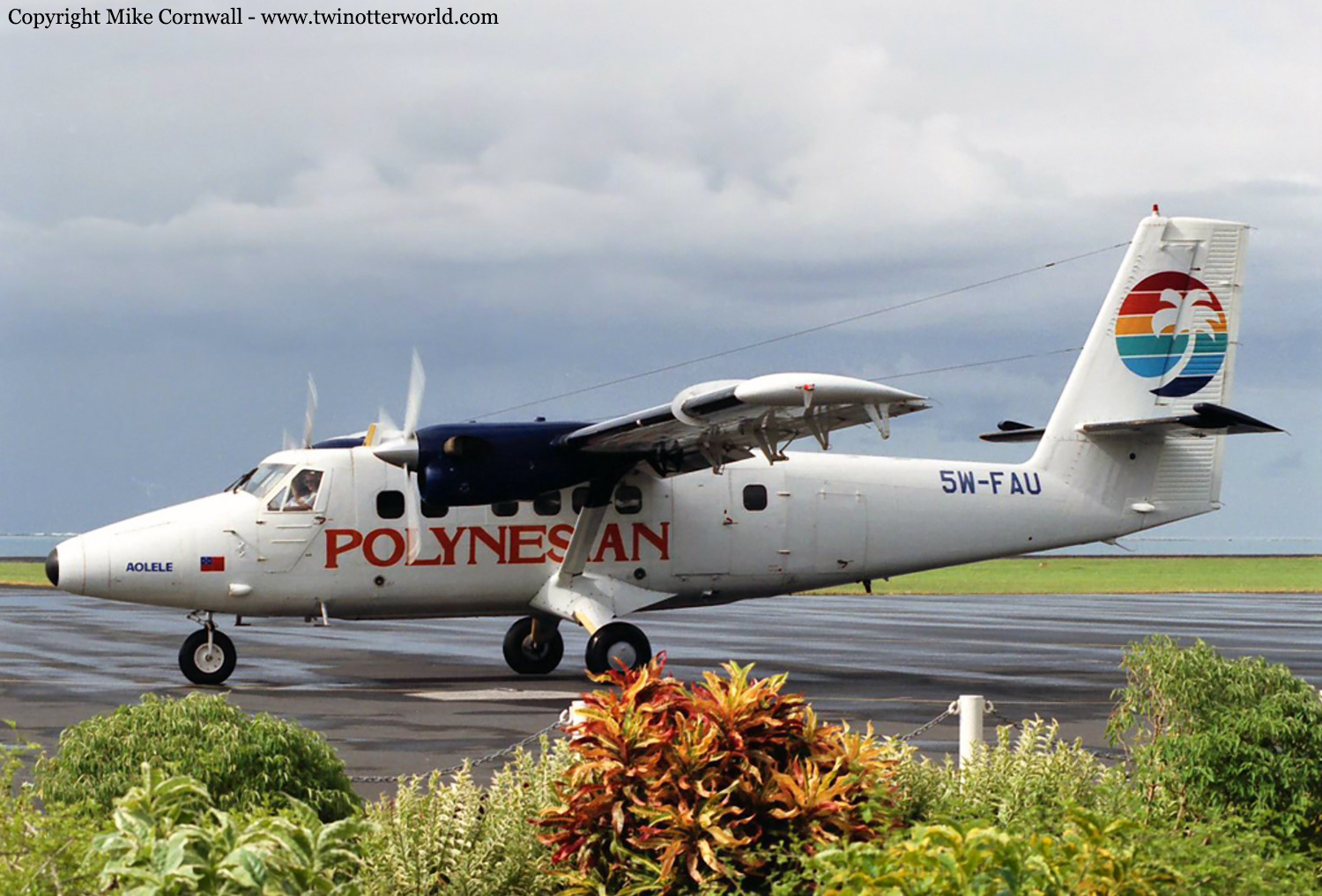
Crash of a De Havilland DHC-6 Twin Otter 300 in Medellín: 14 killed
Date & Time:
Nov 30, 1996 at 1032 LT
Registration:
HK-2602
Survivors:
Yes
Schedule:
Medellín – Bahía Solano – Quibdo
MSN:
746
YOM:
1981
Flight number:
VX148
Crew on board:
2
Crew fatalities:
Pax on board:
13
Pax fatalities:
Other fatalities:
Total fatalities:
14
Captain / Total hours on type:
3311.00
Copilot / Total hours on type:
733
Aircraft flight hours:
35696
Aircraft flight cycles:
48915
Circumstances:
After takeoff from runway 01 at Medellín-Enrique Olaya Herrera Airport, the aircraft encountered difficulties to gain sufficient height. About three minutes after liftoff, the aircraft struck the slope of Mt Padre Amaya located 8 km from the airport. The wreckage was found 30 metres below the summit. A passenger was found alive while 14 other occupants were killed.
Probable cause:
Failure of the crew in the flight technique applied during the take-off phase, by not evaluating the performance of the aircraft, considering the high weight in front of the obstacles to climb over on the ascent trajectory.
The following contributing factors were reported:
- Errors presented in the dispatch, since the weights were not totaled correctly, possibly due to errors in the handling of cargo and unaccompanied luggage.
- Attitude of complacency on the part of the crew, due to excellent meteorological conditions that caused an excess of confidence in the planning of the flight on the part of the crew.
The following contributing factors were reported:
- Errors presented in the dispatch, since the weights were not totaled correctly, possibly due to errors in the handling of cargo and unaccompanied luggage.
- Attitude of complacency on the part of the crew, due to excellent meteorological conditions that caused an excess of confidence in the planning of the flight on the part of the crew.
Final Report:

Crash of a De Havilland DHC-6 Twin Otter 100 in Kahemba: 6 killed
Date & Time:
Oct 3, 1996
Registration:
9Q-CXK
Survivors:
Yes
Schedule:
Kahemba - Kikwit
MSN:
74
YOM:
1967
Crew on board:
2
Crew fatalities:
Pax on board:
19
Pax fatalities:
Other fatalities:
Total fatalities:
6
Circumstances:
Shortly after takeoff, while in initial climb, the aircraft stalled and crashed near the runway end. Both pilots and four passengers were killed while 15 other occupants were injured.
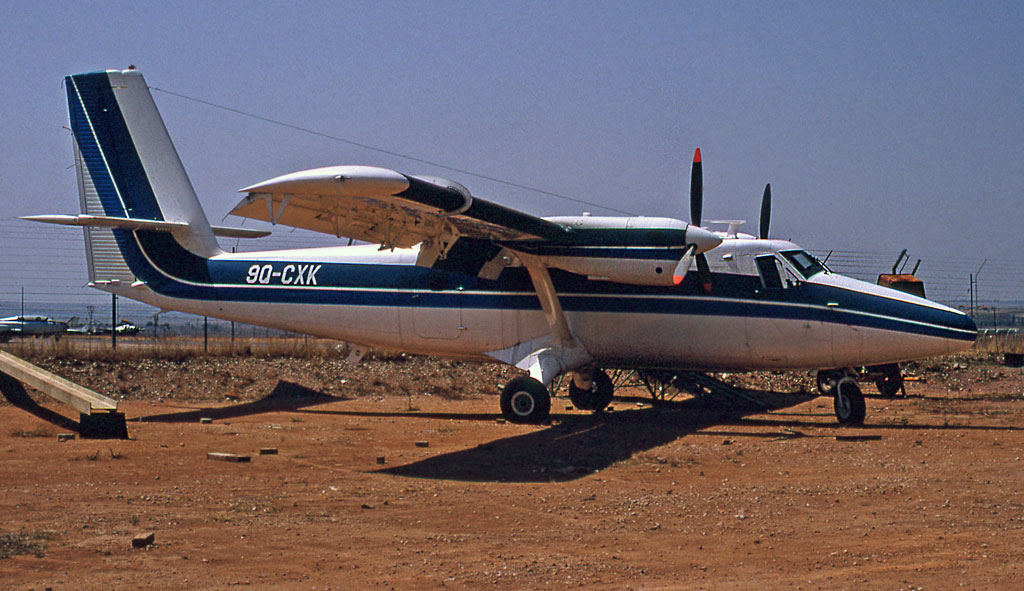
Crash of a De Havilland DHC-6 Twin Otter 300 in Ilaga
Date & Time:
Sep 30, 1996 at 1215 LT
Registration:
PK-YPF
Survivors:
Yes
MSN:
210
YOM:
1969
Crew on board:
2
Crew fatalities:
Pax on board:
3
Pax fatalities:
Other fatalities:
Total fatalities:
0
Circumstances:
The approach to Ilaga Airport was completed in poor weather conditions due to heavy rain falls. After landing on a wet runway surface, the aircraft was unable to stop within the remaining distance, overran and came to rest down an embankment. All five occupants escaped uninjured while the aircraft was damaged beyond repair.
